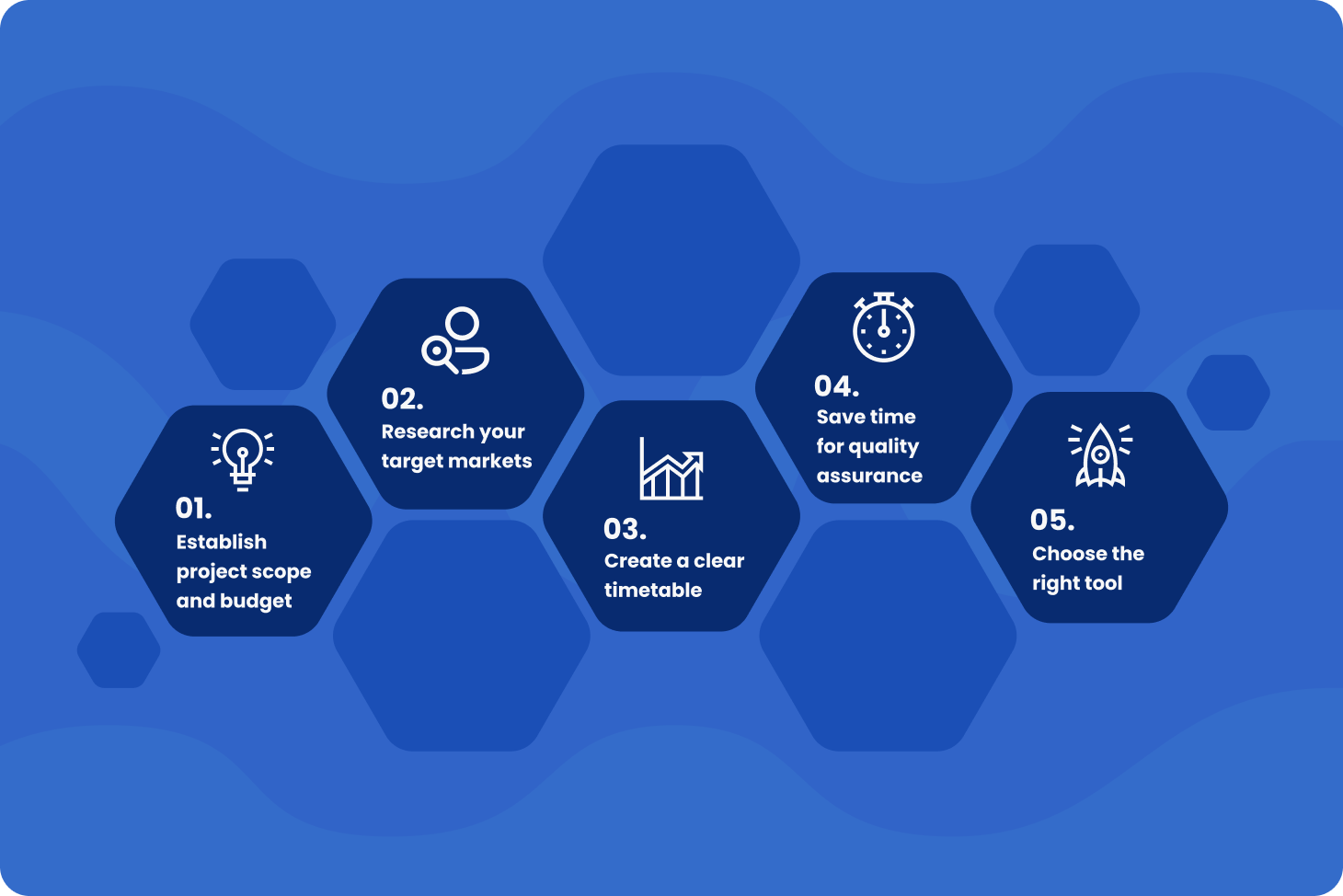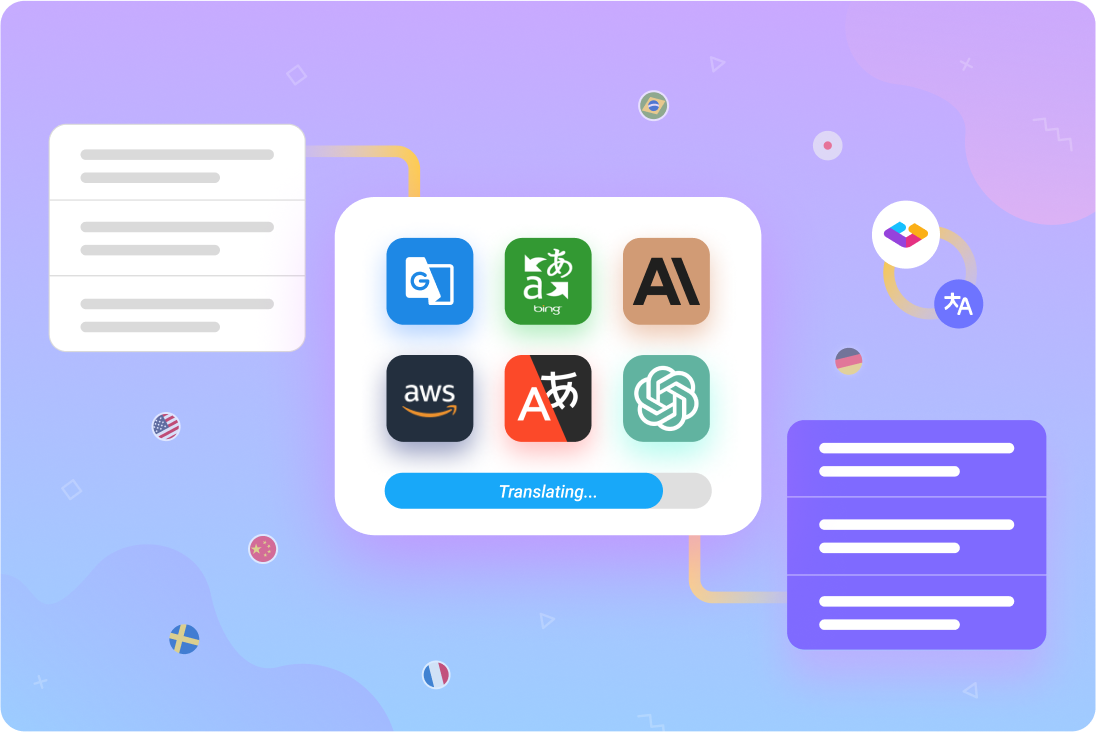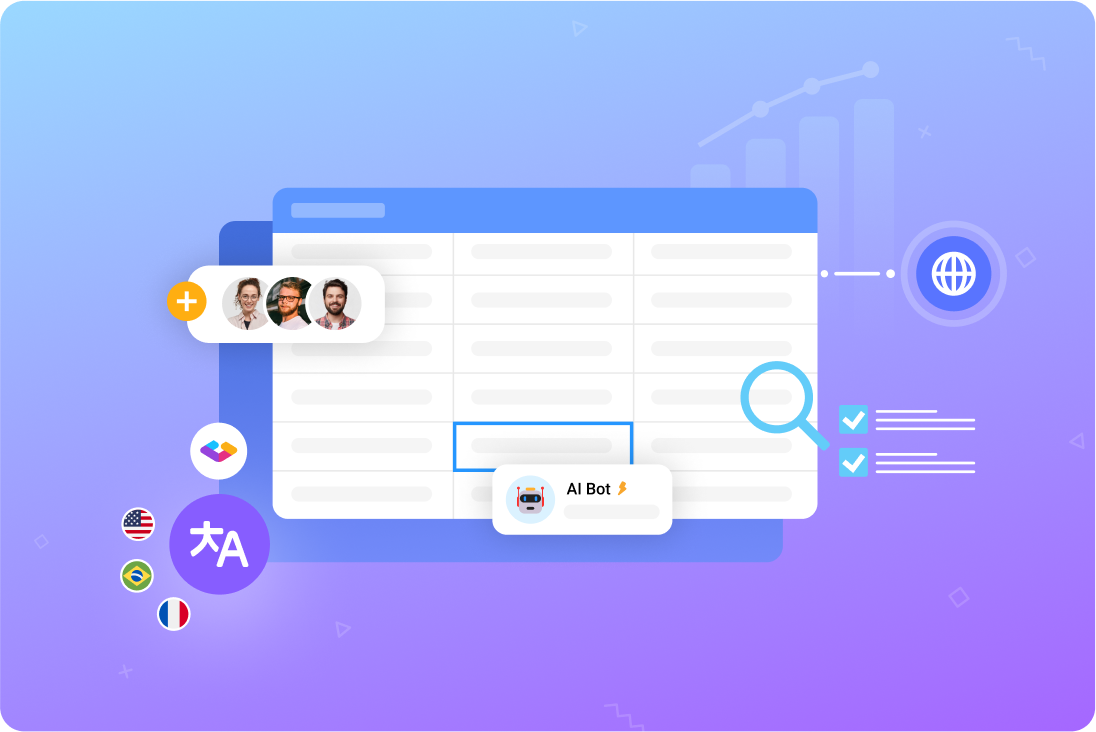Why you need a localization plan
The key to a successful localization project is proper planning in advance. Without a plan, you run the risk of “project creep” — when the parameters and scope of your localization project sprawl out of control. Before long, you’ll find that your project has vastly exceeded its initial budget and will likely fail to hit its deadlines.
Your localization plan should also answer the question of “why” — why are you localizing your content? What are your goals? Establishing your vision will inform the rest of your localization plan. You’ll know where you want to go, which means you can then figure out what it’ll take to get there.
Stay on top of all your localized content with a dedicated content management system built for localization for the ground up.
1. Establish your project scope and budget
The scope of your project represents all the content that you plan to localize. This can be anything from your homepage to your entire website, from a few email marketing campaigns to an entire video game or enterprise app.
Your localization budget will play an important role in determining your project scope. But it’s not the brick wall that it can often appear to be. If you believe your scope requires more funding than has been allotted to you, prove it. What’s the opportunity cost of not localizing that content? How much money will you lose by failing to capture those additional audiences?
With your budget in place, you’ll have a clear idea of what you can afford to localize, and in how many markets. Determine the word counts for all your selected content, since many localization providers charge based on this figure.
2. Choose and research your target markets
Localization is a highly context-specific practice. Content localized for one market may look and feel completely different than the same content localized for another. For that reason, it’s never a one-size-fits-all exercise. Each market requires its own unique approach to ensure that your content will be as appealing to that respective audience as possible.
Market research and analysis will determine the most promising potential audiences for your product or service. Once you’ve identified these regions, hire local experts to perform the research you’ll use for localization. Localization providers will typically offer this service as part of their overall package. Local research is an essential component to an effective localization strategy.
You may feel tempted to localize into all your target markets at the same time, but due to both budgetary and logistical constraints, this may not be possible. Fortunately, it’s not just acceptable, but often preferable to launch in your source language, then release localized versions over time.
This approach lets you finalize your content before beginning a complex localization process. Releasing your source and target versions simultaneously requires that you either localize while creating content, or delay your source release until localization is complete — neither of which may be optimal.
3. Create a clear timetable
With your budget, scope, and target markets in place, you’re now free to lay out a timetable for your project. Reconcile your internal deadlines with the estimates given to you by your localization partners or staff, then establish a timetable for all involved personnel to follow.
Whenever you’re working with external vendors, bear the following principle in mind:
Services can be good, cheap, or fast. Choose two.
If you need a lot of high-quality work ASAP, it’ll be expensive. If you don’t mind waiting, you may be able to stretch your budget further.
Improve your deadlines by making your localization workflow more efficient. Localization glossaries contain approved translations for key words and phrases in your project, allowing translators to save time while improving translation accuracy. Meanwhile, translation memories will store all your previous translations so they can be reused in the future.
4. Save time for quality assurance
When assembling your schedule and setting deadlines, don’t forget to allow time for localization quality assurance (LQA). You’re not just checking for linguistic errors, but also technical ones. Do your localized strings fit within their allotted spaces in your website, app, or video game? Is everything legible in its current font sizes?
Screening for issues like these often involves checking screenshots of the localized content against the strings in your content management platform. Find out how Angry Birds developer Rovio made their LQA process four times faster by integrating Unity with Gridly and creating an automated screenshot generation script.
When you invest the time and effort into streamlining your LQA process, you can dedicate more time to the creation of optimal localized content while still hitting all your deadlines.
5. Choose the right tool for the job
Localization glossaries and translations memories are just two of the many features you’ll find in a good localization tool. Combining localization features with content management capabilities will help you manage your projects and hit your deadlines while reducing errors.
Many localization project managers opt for Google Sheets as their default workstation. Among the benefits of Google Sheets for loc managers are its ease of use, widespread popularity, and price point — it’s free. But at the same time, Google Sheets often isn’t enough when compared to the more specialized localization tools available.
Gridly is a content management platform overflowing with useful features to help you stay on top of your localization projects and deliver top-tier results. Integrations with Unity and Unreal empower you to push content updates instantly and ship faster, while granular access control preserves your content against unwanted changes. Meanwhile, automated status tracking enables translators to instantly prioritize new content and work more efficiently.
Supercharge your localization process and master your next project with Gridly. Try it for free today.










